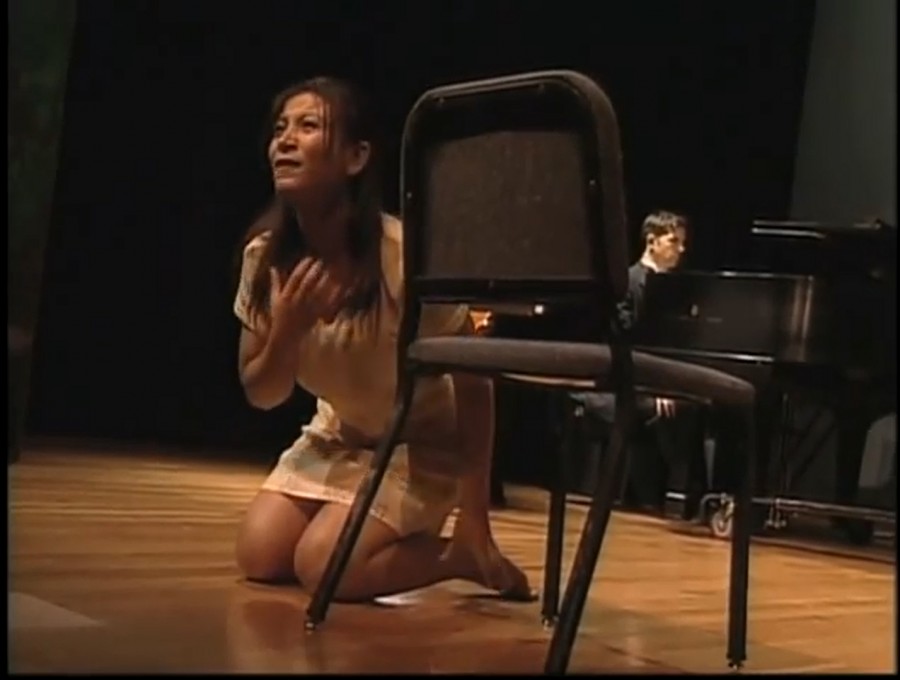“Tres Vidas”- A look into Latina history
Screenshot by Bianca gonzalez/The Skyline View
Photos screenshot from the video on Core Ensemble’s website.
The power of Latina history was brought to life on stage last week in the Skyline Theater for National Latino Heritage Month.
“Tres Vidas,” a performance produced by the Core Ensemble, was shown at Skyline last Wednesday evening. The Core Ensemble created a unique type of theater called “Chamber music theater,” so along with actress Cristina Isabel Lucas, there were three musicians on stage during the performance.
Accompanied by piano, cello and percussion, Lucas performed the lives of three historical Latina women: Frida Kahlo, Rufina Amaya and Alfonsina Storni.
The first performance, Frida Kahlo set up the fiery soul of the entire production.
“The Mexico that I carry inside and outside of me,” Kahlo said about her style and her home.
Lucas sang and spoke as the infamous surrealist painter and presented the beauty and culture that influenced her art.
As Lucas exited to change for her second role, the musicians filled the theater with ambient sound and preparation. Dressed in a simple white dress and a black wig, Lucas reentered, this time as Rufina Amaya, the second voice of history that night.
Amaya was the last survivor remaining in her El Salvadorian town after a massacre occurred at the hands of guerrillas.
“The sounds of fury, the sounds of pride, the sounds of soldiers,” explained Lucas through Amaya’s terrified eyes.
The new emotion that settled around the theater was quiet, and astounded as Lucas appeared scared, hopeless and lost hiding behind chairs and under the piano. Within an hour, two very different scenarios were presented but both portrayed the strength that Latina history revolves around.
“I come to be heard,” Lucas, as Amaya, said to the audience before exiting.
The final role, Alfonsina Storni was contemporary and cryptic. Lucas entered the stage in a long purple dress and a short bob hairstyle, book in hand.
Storni’s poetry and life embodied early feminism and feminist ideals in Latina history.
“It is impossible to be a thinking woman and not be a feminist,” Lucas said as she stepped across the stage.
She read her poetry center stage, and listened to the music being played by the ensemble. Eyes closed, swaying, she compared her poetry to music.
“My poems are like a tango,” she said.
The tone of the performance shifted as hints of suicide and death snuck into the language. The final moments of the show were filled with Lucas inching towards an invisible sea, arms outstretched, accepting eternal sleep.
Lucas embodied three boisterous women of Latina history, with different lifestyles and stories. All of them; however, held the characteristics of strength, wisdom and preservation.
The lasting effect of feminine influence in Latina culture and history was shown through the lips of one woman and the life of these three powerful women during the “Tres Vidas” performance. This production was not only an examination of Latina strength, but the strength of women as a total.
“I’m much more than a woman, I’m a human being,” said Lucas near the end of the performance.








